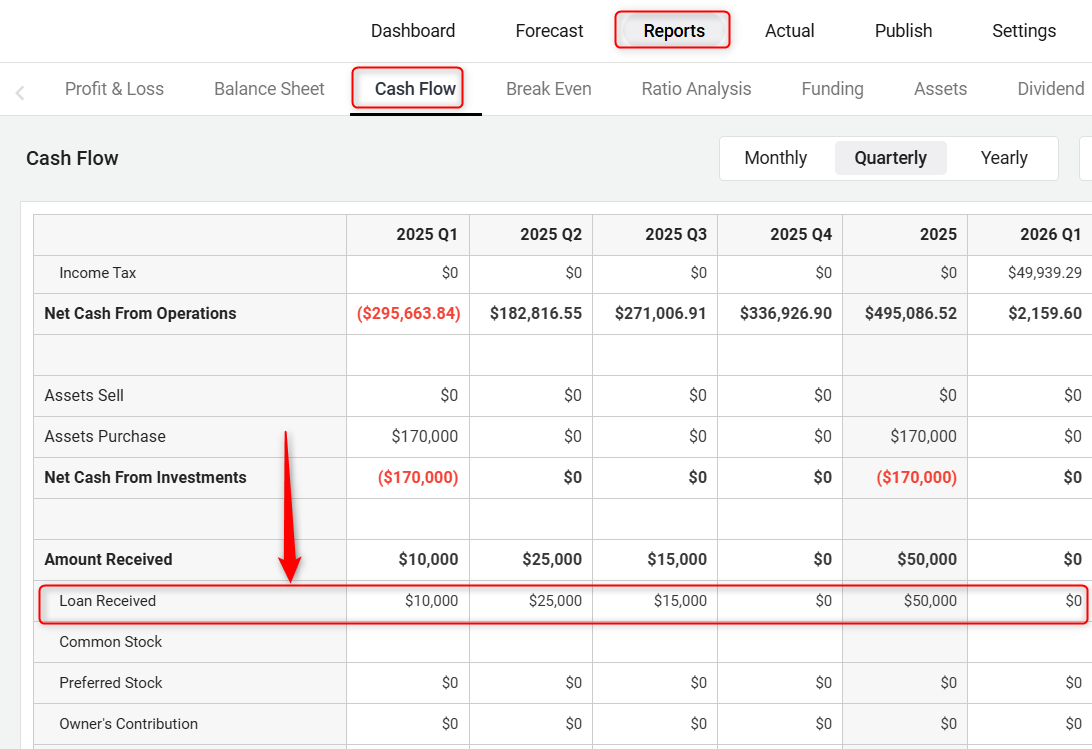Entering a loan with a custom payment schedule
Adding a New Loan:
Use this method for loans you'll place anytime after the start date of your forecast/plan.
- 1
-
Under the Forecast tab of the Finance forecasting module, click on the Funding tab, and then click the Add Funding option:
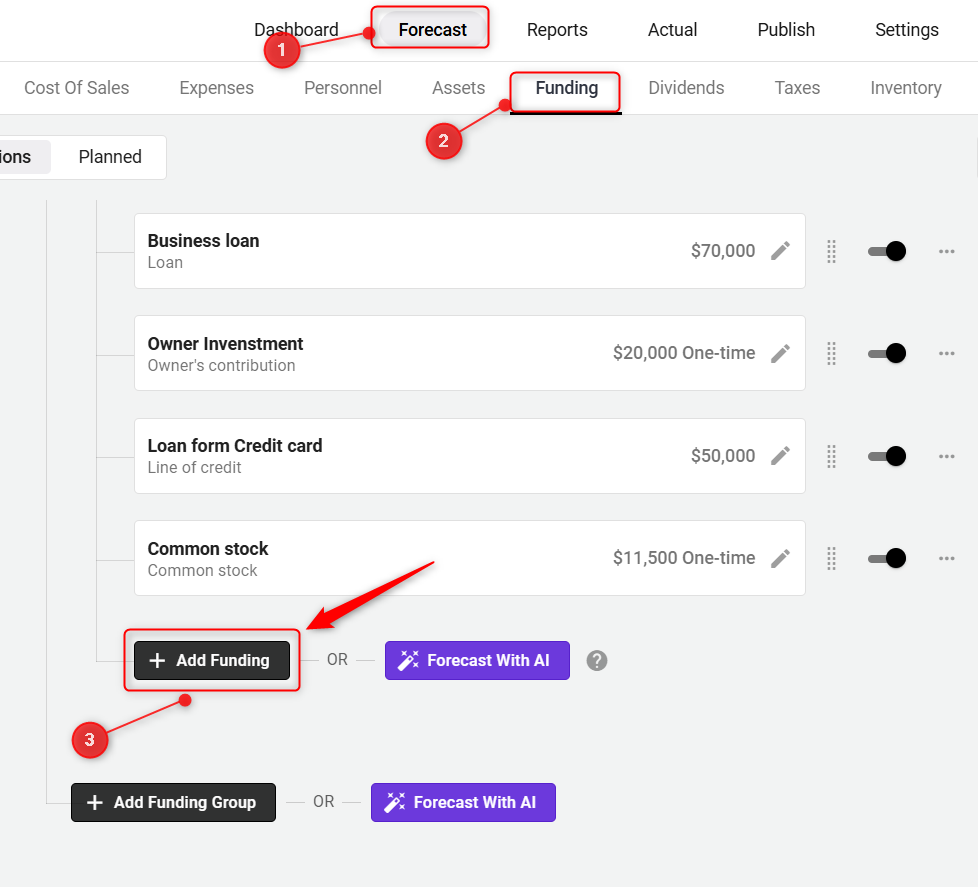
- 2
-
Enter a name for the loan(borrowed on interest), and select the funding type as Other Financing. Enable the toggle to indicate that the loan funding was established before your plan started.
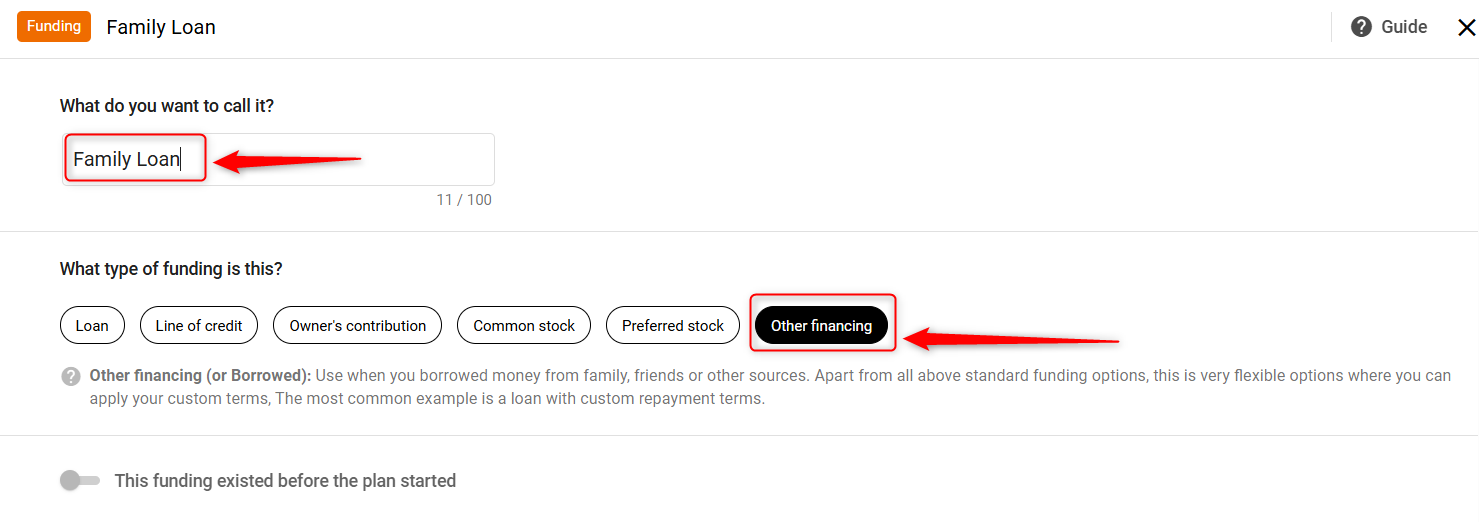
- 3
-
Enter the loan amount, determine the date of fund received, and enter the annual interest rate starting from the specified date.

- 4
-
Indicate whether the repayment period will be within one year, and click on Save.
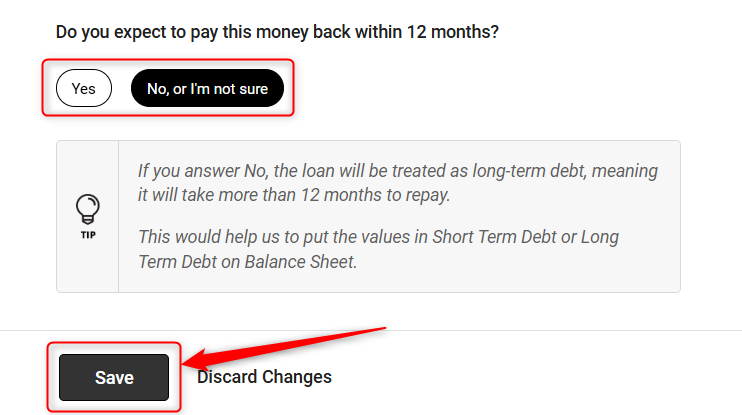
- 5
-
Amount Received: Enter the amount of money you'll receive and when you'll receive it. You can enter a single amount in a single month or amounts in multiple months. Depending on how your loan is structured, the system will automatically calculate interest on the loan and other parameters using the standard loan formula:

- 6
-
Amount Repaid: Enter the amount you plan to pay back each month or year against the balance:
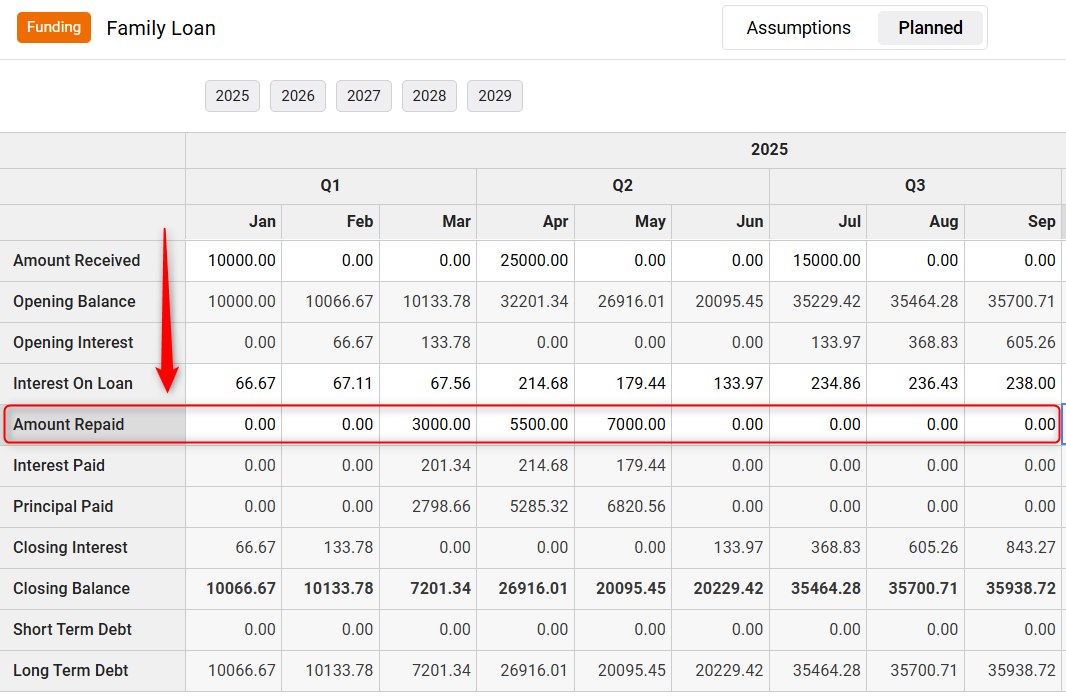
- 7
-
Updates you make in the Excel sheet are in autosave mode. Close the overlay. This loan and its payments will be displayed in the Financing table.
Where does this entry appear in the financial statements?
When you enter a Loan, only the interest portion will appear in your Profit and Loss statement. This is because the interest is the only true cost your business incurs in the loan:
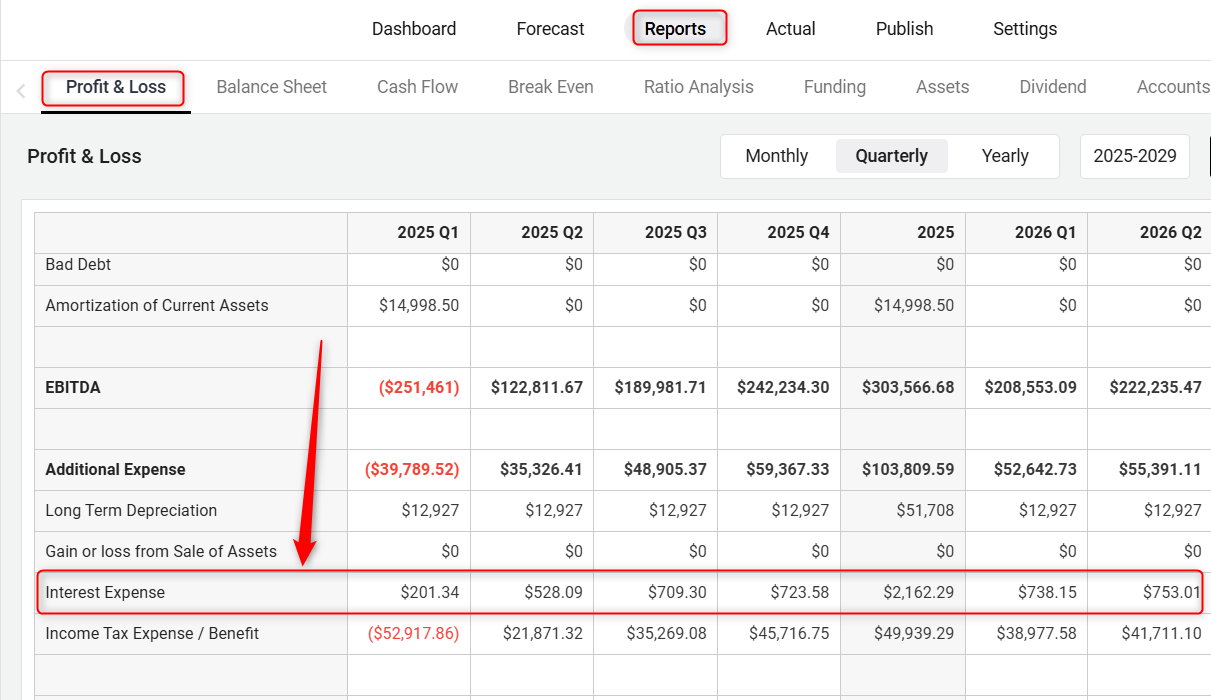
Loans will appear on one or two lines of the Balance Sheet, depending on their length. A loan that will be paid back within 12 months appears as Short-Term Debt. A loan of longer than 12 months will be divided into Long-Term Debt.
TIP: Learn more about short-term and long-term debt, click here.

In the Cash Flow, similarly, loans will be considered under the Loan Received section:
